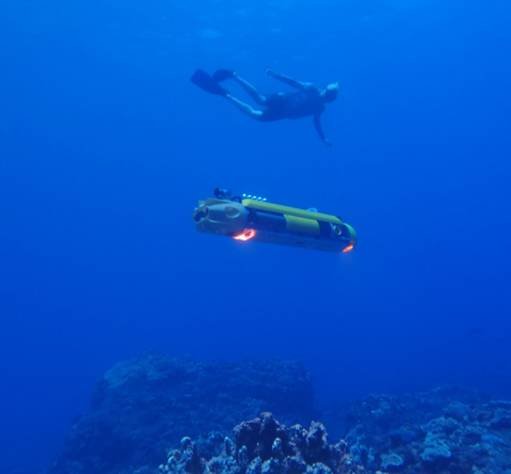The Role of AUVs in Mapping Mesophotic Reefs: A Case Study
In a groundbreaking collaboration between the Norwegian University of Science and Technology (NTNU), University of Sydney, California Academy of Sciences (CalAcademy), Oceanly, University of Western Australia, and University of Auckland, supported by Inkfish, a remarkable project was undertaken to explore the genetic diversity of corals in mesophotic reefs off the coast of Tonga.
Exploring Mesophotic Reefs
Mesophotic reefs, known for their low-light conditions and situated in middle-depth waters, play a crucial role in supporting coral genetic diversity, particularly in the face of increasing threats from climate change. Dr. Jackson Shields, a Research Fellow at the University of Sydney’s Australian Centre for Robotics (ACFR), highlights the importance of these reefs as potential refuges for corals that are vulnerable to the impacts of climate change.
Traditionally, studying mesophotic reefs has been challenging due to their depth, making them inaccessible to divers. To overcome this limitation, the research team utilized two Seeker Autonomous Underwater Vehicles (AUVs) equipped with Nortek Nucleus 1000 navigation sensors to create a detailed 3D map of the coral reefs.
The Inkfish Coastal Seas Expedition
As part of the Inkfish Coastal Seas expedition, the team conducted a photogrammetry assessment of reefs in the Hapai area of Tonga in 2024. By combining data collected by the AUVs with close-range photogrammetry plots and coral samples obtained by divers, the researchers aimed to gain a comprehensive understanding of these vital ecosystems.
The Seeker AUVs, developed by the ACFR, are lightweight and cost-efficient, making them ideal for marine exploration. Equipped with high-resolution cameras, the AUVs collected image surveys of reef slopes at depths ranging from 5m to 75m, covering a total area of 8000 square meters over one to two days at each site.
Utilizing Advanced Navigation Technology
The Nortek Nucleus 1000 navigation sensors played a critical role in ensuring precise navigation for the AUVs. By combining data from the Nucleus sensors with information from the USBL system, the vehicles were able to maintain a consistent altitude of 2m above the reef while mapping the area with exceptional accuracy.
Dr. Shields emphasizes the importance of reliable navigation solutions, especially in complex underwater environments like mesophotic reefs. The compact size and easy integration of the Nucleus sensor proved to be invaluable for the success of the expedition.
Looking Towards the Future
With mesophotic reefs serving as vital ecosystems for reef resilience, the research conducted during the Inkfish Coastal Seas expedition provides valuable insights into the physical environment, biodiversity, and ecology of these reefs. Dr. Shields envisions continued use of AUVs equipped with advanced navigation sensors to further explore and understand these important underwater ecosystems in the future.
As technology continues to advance, the role of AUVs in marine research is set to expand, offering new opportunities to study and protect delicate marine ecosystems like mesophotic reefs.

